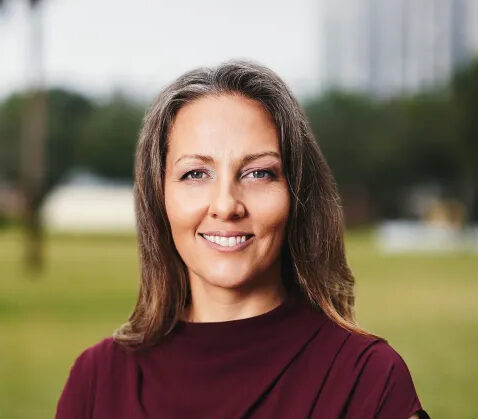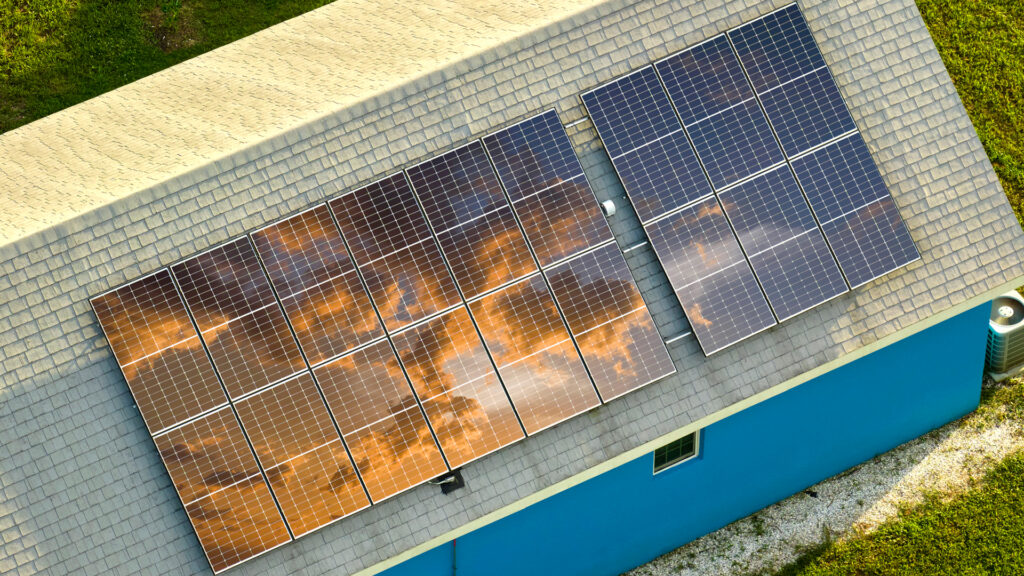By Carlos Roa, VoLo Foundation
This month marks the two-year anniversary of the historic Inflation Reduction Act, signed by President Joe Biden, which represents the largest single investment in climate and energy in U.S. history.
With aims to combat the climate crisis, advance environmental justice and solidify America’s leadership in clean energy manufacturing, this act sets the nation on a course toward achieving a net-zero economy by 2050.
To delve deeper into this milestone’s anniversary, we interviewed Dawn Shirreffs, the Florida director of the Environmental Defense Fund, to discuss the progress made, the numbers behind the achievements, the risks that remain, and what could happen if efforts to address climate change are scaled back.

Some people believe that if we work on climate goals, environmental responsibility and green energy, it’s going to be a loss for profits and economic numbers. What do you think about that?
I think that’s the only path forward. We can’t protect our economy without addressing climate. It is an economic imperative, not just an environmental one. That’s a non-starter.
We know what the numbers look like. We’re already seeing this manifest after the bipartisan infrastructure law and the Inflation Reduction Act, where the return on investment for every dollar spent is tremendous as an economic generator.
The Inflation Reduction Act was signed by President Joe Biden two years ago (on Aug 16, 2022). Are there results which support this assertion?
Absolutely. We are already seeing numbers, with companies announcing more than 100,000 new jobs in the energy sector because of the Inflation Reduction Act. That was just in the first six months of what will be a 10-year program. These aren’t jobs that pop up and go away; they’re building the platform for large-scale economic employment shifts.
Regarding green energy, there are perceptions suggesting that it’s not reliable or that it won’t provide enough power for what we need.
There’s a lot of money trying to suggest that climate is a partisan issue, but the reality doesn’t track. We’re seeing a serious increase in sustainable projects in red states like Texas and Iowa, where they’re investing in wind energy. They’re doing it because it’s financially beneficial.
The narrative that green energy isn’t reliable is merely a political talking point. In Florida, for example, there’s overwhelming support for solar energy, which is more cost-effective than building a new natural gas power plant. People are beginning to understand that these clean energy investments offer both environmental and economic benefits.
There is a certain level of disapproval of rebates for green energy, or incentives for purchasing new home appliances or solar panels, as they are seen as just giving away money. What do you say to those critics?
I’d ask those same people how they feel about agricultural subsidies. We invest taxpayer dollars to ensure Americans have food and that food production is safe. Similarly, when we invest in reducing carbon emissions, we’re also investing in continued agriculture, public health and energy savings.

It might look like a giveaway if you’re helping someone buy an energy-efficient refrigerator or install solar panels, but the net public benefit is significant. Additionally, we all pay for how much power must be produced, not just how much we use. If a utility needs to build a new plant, that cost is spread over all its ratepayers. Reducing demand through energy efficiency means fewer new plants are needed, which lowers costs for everyone.
In Florida, we are extremely dependent on natural gas, and it is imported through multiple pipelines. Last summer, we had energy bills increase by 30-40% because of the war in Ukraine, driving up natural gas prices. When we don’t have a diversified way to reduce our energy usage, or have clean energy meeting that demand, we’re subject to volatile market issues that affect our entire economy.
These investments have short-term benefits for individual homeowners and businesses but are a long-term benefit for the community. They shift the market, with industries like refrigerator assembly and solar panel manufacturing becoming scaled up. Over the long term, this growth of production means that these technologies will become more affordable. So, even after the incentives are gone, clean energy will be much more accessible, and the community will continue to benefit.
You mentioned that these investments bring both short-term and long-term benefits. What are the possible consequences if we don’t make these investments now?
Speaking from my vantage point as the Florida director, we recently shared a tool called “Florida’s Climate Future” on floridasclimatefuture.org. It addresses the economic impact if we don’t tackle climate change and reduce carbon emissions now. Rising costs from increased power use, heat, hospital bills, and even fatalities are some of the risks.
Homeowners’ flood insurance is already in a tailspin in Florida, and that will only get worse with flooding from extreme rainfall, stronger hurricanes and sea level rise. We have these compounding risks that are extremely expensive. The state has begun investing billions in adaptation, but if my bathtub is overflowing, I don’t just mop the floor — I also turn off the spigot.
That’s what we are doing when we address climate change. Florida might not be able to change global climate projections by itself, but with 23 million people, we have significant buying power. As a state more vulnerable to climate change than many others, if we’re not leading, we have more to lose.
Carlos Roa is senior press and PR director for VoLo Foundation. This piece was originally published at https://volofoundation.org/news/why-climate-solutions-are-economic-solutions-insights-from-dawn-shirreffs/.
Sign up for The Invading Sea newsletter by visiting here. If you are interested in submitting an opinion piece to The Invading Sea, email Editor Nathan Crabbe at ncrabbe@fau.edu.



